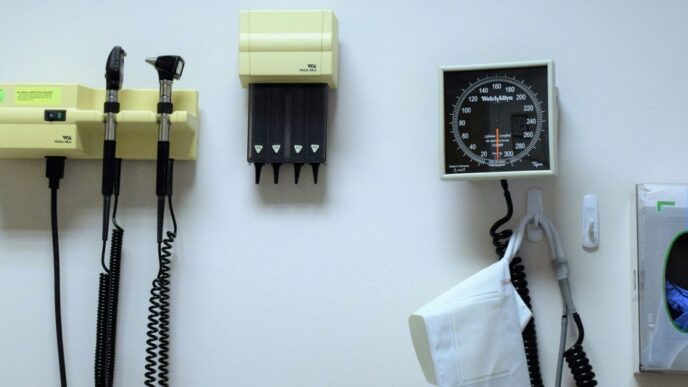Introduction
Scleroderma, a rare and complex autoimmune disease, is a medical condition that often remains misunderstood despite its significant impact on the lives of those who live with it. The term “scleroderma” is derived from the Greek words “sclero,” meaning hard, and “derma,” meaning skin. This name accurately describes one of its most noticeable features: the hardening and thickening of the skin. In this article, we will delve into the depths of scleroderma, discussing its causes, symptoms, diagnosis, and available treatment options.
Understanding Scleroderma
Scleroderma, also known as systemic sclerosis, is an autoimmune disease that involves the immune system mistakenly attacking healthy tissues in the body. This attack primarily affects the connective tissues, leading to an overproduction of collagen, a protein responsible for the skin’s elasticity. This excessive collagen production causes the skin to become tight, thick, and hard.
Causes and Risk Factors
The exact cause of scleroderma remains unknown, though researchers believe it is a multifaceted condition influenced by both genetic and environmental factors. Some of the factors that may contribute to its development include:
- Genetic Predisposition: Scleroderma can sometimes run in families, suggesting a genetic component to the disease.
- Autoimmune Response: Scleroderma is fundamentally an autoimmune disorder, with the immune system mistakenly targeting the body’s own tissues.
- Environmental Triggers: Exposure to certain environmental factors, such as toxins or infections, may play a role in the development of the disease.
Types of Scleroderma
Scleroderma can be categorized into two primary types: localized and systemic.
- Localized Scleroderma: This form of the disease predominantly affects the skin and its underlying tissues, leading to thickened and hardened skin in specific areas. It usually does not affect internal organs and is typically less severe.
- Systemic Scleroderma: Systemic scleroderma is a more severe and potentially life-threatening form of the disease, impacting not only the skin but also internal organs. Systemic scleroderma can be further divided into two subtypes:
a. Limited Cutaneous Systemic Sclerosis: In this subtype, skin symptoms are typically limited to the fingers, face, and lower arms. Internal organ involvement is less common.
b. Diffuse Cutaneous Systemic Sclerosis: This form affects a broader area of the skin, often the trunk and upper arms, and is more likely to involve internal organs.
Symptoms of Scleroderma
The symptoms of scleroderma can be highly variable, depending on the type and severity of the disease. Some common symptoms include:
- Skin Changes: Thickening, hardening, and tightening of the skin, often affecting the fingers and face, leading to a waxy, shiny appearance.
- Raynaud’s Phenomenon: A condition in which fingers and toes become extremely sensitive to cold, often turning white, blue, or purple in response to temperature changes or stress.
- Gastrointestinal Problems: Scleroderma can cause digestive issues, including difficulty swallowing, heartburn, and bowel problems.
- Shortness of Breath: Lung involvement in systemic scleroderma can lead to breathing difficulties.
- Joint Pain: Some individuals with scleroderma experience joint pain and inflammation.
Diagnosis and Treatment
Diagnosing scleroderma can be complex due to the varied symptoms and the potential to mimic other conditions. Diagnosis often involves a combination of medical history, physical examination, and various tests, such as blood work, skin biopsies, and imaging studies.
Although there is no cure for scleroderma, there are various treatment options to manage the disease and alleviate symptoms:
- Medications: Immunosuppressants and vasodilators may be prescribed to reduce inflammation and manage symptoms.
- Physical Therapy: Physical therapy can help maintain joint mobility and reduce skin tightness.
- Symptom Management: Medications and lifestyle changes can assist in managing specific symptoms, such as heartburn, Raynaud’s phenomenon, and pain.
- Pulmonary Rehabilitation: For those with lung involvement, pulmonary rehabilitation may be necessary to improve breathing and lung function.
- Minimally Invasive Procedures: In some cases, minimally invasive procedures such as stem cell transplantation may be considered, though these are usually reserved for severe cases.
- Supportive Care: Emotional and psychological support is essential for those living with scleroderma. Support groups and counseling can provide valuable assistance.
Conclusion
Scleroderma is a complex and rare autoimmune disease that can have a profound impact on the lives of those affected. While there is no cure, early diagnosis, and a personalized treatment plan can help manage symptoms and improve the quality of life for individuals living with scleroderma. Raising awareness, ongoing research, and medical advancements are vital to enhancing our understanding of this condition and finding more effective treatments. With proper care and support, individuals with scleroderma can lead fulfilling lives and overcome the challenges posed by this rare disease.













